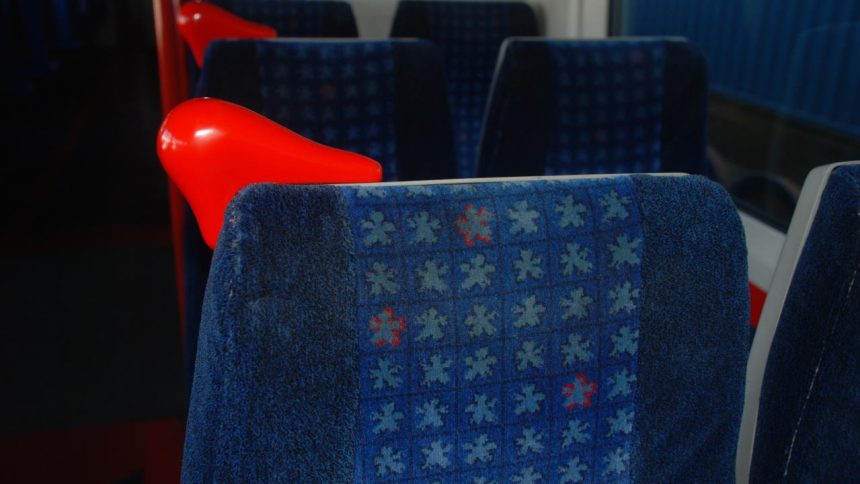Angel Trains, one of Britain's train leasing companies, 3D printing leader Stratasys, DB ESG and train operator Chiltern Railways have announced that they have joined forces to trial the first 3D printed parts ever used on an in-service passenger train in the UK.
These parts include four-passenger armrests and seven grab handles, which have been installed on Chiltern Railways trains.
The trial's success to date demonstrates how 3D printing can help train operators accelerate the replacement of parts. This allows them to get vehicles back into service quicker.
Such cost and time efficiencies are exemplified by the armrest feature currently in-service with Chiltern Railways. According to Brown, the lead time for this part using conventional manufacturing methods would be approximately four months. However, with Stratasys FDM 3D printing, the final armrest can be produced within one week, representing a decrease of almost 94%.
With positive responses received from train operators, the three-way consortium is now set to commence its next trial with Great Western Railway, which plans to integrate 3D printed parts within a selection of trains over the next few months.
What did the officials say?
James Brown, Data and Performance Engineer, Angel Trains said:
“In recent times, we've seen growing concern amongst operators that sourcing replacement parts for older train fleets at a reasonable cost and in a short timeframe is proving increasingly difficult”
“The problem is that traditional manufacturing methods only make it cost-effective to produce high volumes of spare parts, even though an operator may only need a few obsolete train parts replaced. In addition, lead times can take months. This is why we have teamed up with DB ESG and Stratasys, showing how operators can overcome these hurdles by using 3D printing to produce the exact amount of parts they need at a fraction of the time and cost of traditional methods,”
“This is an exciting time for the UK rail industry,”
“With this technology, train operators can be much more responsive to replacing passenger-facing parts that get damaged or vandalized. A 3D printed replacement part can be produced on-demand and installed immediately. With low-volume production now achievable, we're also starting to explore how we can leverage 3D printing to customize interiors that are better suited to the passenger commute. For example, we've tested 3D printing seat back tables with braille informing the passenger that the toilet is ten rows back from that particular seat. This level of customization is unprecedented and can only be enabled by 3D printing, offering the potential to significantly improve both the servicing of trains and the passenger experience in the future.”
Martin Stevens, Mechanical Engineering Manager DB ESG comments:
“Achieving certification removes a major barrier that has prevented more widespread implementation of 3D printing across UK trains. Our role in this project has been to investigate the design, production and finishing of FDM parts, verifying whether the parts comply with rail standards and checking whether they work in the operating environments. We have also optimised the component design of FDM manufacture.”
Phil Andrews, Interim Engineering Director at Chiltern Railways says:
“At Chiltern Railways we are excited to be part of this innovative trial using 3D printed parts on our trains. 3D printing has a much quicker turnaround and is more cost-effective than traditional manufacturing methods. With much of our fleet approaching 30 years old, it's vital that we can source the parts we need as quickly as possible. This trial will play a part in maintaining our industryleading customer satisfaction scores and ensure our train interiors are maintained to the highest standards.”
Yann Rageul, Head of Strategic Accounts for EMEA at Stratasys, concludes:
“Having successfully proven the viability of 3D printed parts within trains in the UK, the impact on the traditional rail industry supply chain can be transformative. Train operators can eradicate the issues associated with physical inventories by building a library of digital inventory that can be 3D printed as and when they need it, wherever they need and in the exact quantity required. We are witnessing a new era of true on-demand production with no waste.
Where Next?
News Homepage
For the Latest Railway News
RailAdvent Online Shop
Framed Prints, DVD's / Blu-Ray's and more
LocoStop Community
Come and share your railway pictures

